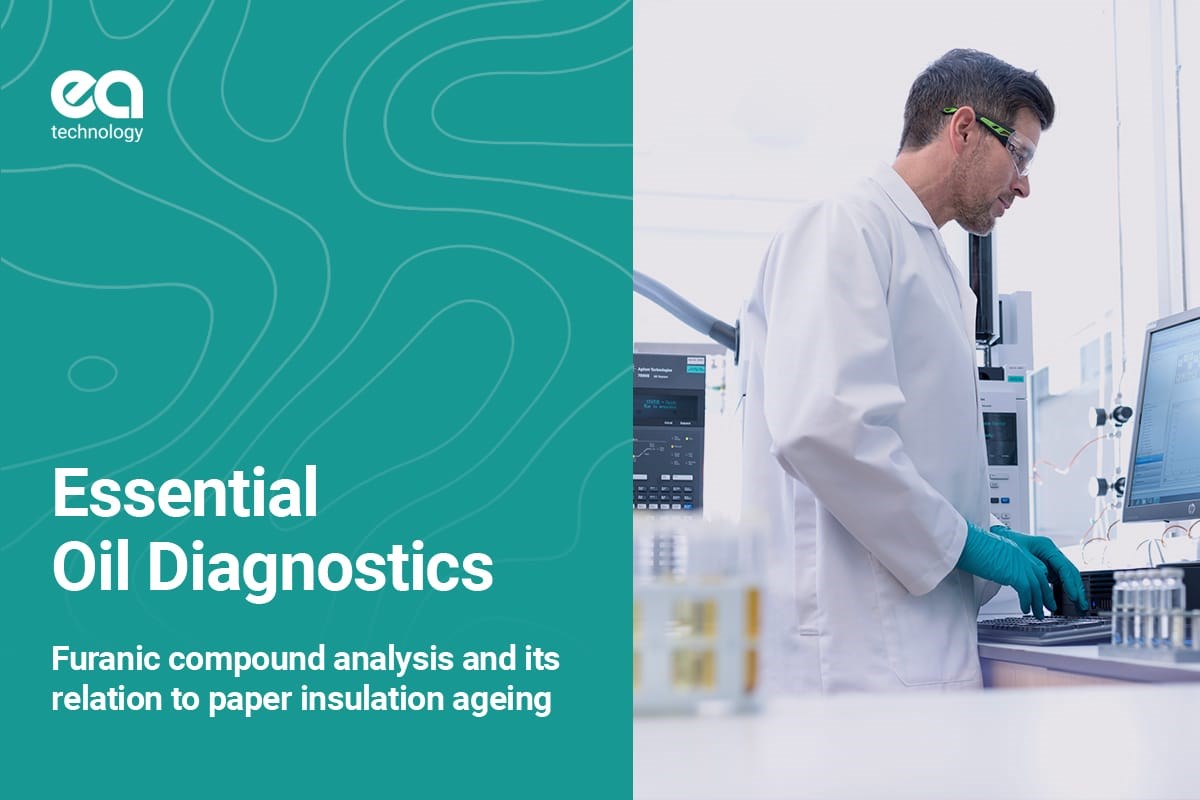Furanic Compound Analysis and its relation to paper Insulation Ageing
-
17 March 2021
-
EA Technology

Most transformers rely upon a combination of insulating oil and paper to provide insulation both between phases and phase and earth. Transformers are probably the most reliable components on the high voltage networks, having few moving parts. However, they are subject to long term ageing and degradation. Thermal degradation of the insulation occurs during life. Degradation of the paper insulation is particularly serious as it leads to reduction in the mechanical capability of this paper. This can lead to the ultimate failure of the transformer at times of mechanical shock.
To understand where on its lifespan an asset (transformer) is you need to understand the condition of the paper insulation. There is one of two ways you can achieve this:
1. Open the transformer up, expose the windings, cut out a piece of paper insulation and send off to the laboratory for physical DP (Degree of Polymerisation), re-wrap the exposed part of the windings and re-energise the transformer.
or
2. Test the oil sample already taken for the presence of Furanic Compounds to get an estimated DP.
Furan formation
As the paper insulation degrades, the cellulose chains (paper is made up of cellulose molecules) break up shortening their length. The shorter the chains the lower their strength. As the molecules separate they produce Furanic compounds which are deposited in the oil. There are five furanic compounds of which the 2-furfuraldehyde is the one that is most stable and most commonly used, it’s also known as furfuraldehyde, 2FAL, 2-Furfural and FFA amongst others.
The FFA is used to estimate the degree of polymerisation by correlating the FFA result to a DP result. There are a number of equations out their which can be used to carry out the estimation / conversion but the most common is the chendong ratio. A DP value of new kraft paper is in the region of ~1000DP where as severely degraded kraft paper at ~200DP would signify a paper that has lost the majority of its strength and as such would not be able to withstand a through fault. An asset with a DP in the region of ~200DP would ultimately be classed at its end of useful life (EOL).
Here’s how we do it:
So once the oil sample has arrived at the lab to determine the Furan compounds we use a piece of equipment called a HPLC (High-Performance Liquid Chromatography). The testing is carried out in accordance with IEC 61198: Mineral insulating oils – Methods for determination of 2-furfual and related compounds so if you want to know more in details that’s the place to go.
In summary the sample is prepared by adding a reagent (Acetonitrile) to the oil and stirring the two together and then left to stand. The acetonitrile separates from the oil and takes the Furanic compounds with it to form a layer on the surface. This layer is then extracted and added to a vial ready for assessment via HPLC. The equipment then carries out the analysis and gives us the Furanic compounds for the chemists to assess and interpret.
What should you do if the FFA is high?
As a loose rule of thumb an FFA content of 1ppm correlates to a DP of ~460DP and would signify the onset of paper degradation whereas an asset with an FFA content of 6ppm correlates to a DP of ~240DP and would signify and asset which is approaching / at its end of life.
So what do we do about it? Unfortunately the answer to that is nothing. There is nothing you can do. Paper degradation is irreversible and no form of treatment will offer a solution apart from re-winding and asset. It has been known that people carry out oil filtration or treatments to remove the Furans, however the Furans are only a bi-product of the degradation process that has already happened. If any form of oil treatment / replacement has been undertaken due to any other factors such as poor oil quality it is important to understand that this process may well or will strip out the Furan markers and it is important to inform the laboratory of such treatment. This does not mean that when the next result comes back at <0.01ppm of FFA that everything is all good, it isn’t, the degraded paper is still there.
The Furan and DP information is not used as a condition / maintenance indicator but an asset health indicator. It is a vital tool in the arsenal and a must have for understanding the full condition of any transformer and where on its life span the asset it. It ultimately drives the asset replacement strategies.
Next time we will take a look into Understanding PCB and Ensuring Personnel / Environmental Safety so stay tuned…
